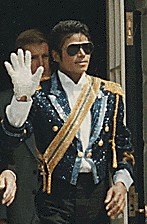Cosmetic surgery
Cosmetic Surgery (Aesthetic Surgery) is the field of surgery in which operations serve to improve appearance, rather than to cure disease. As one expert in this field explained: "Aesthetic surgeons, in the normal practice of their specialty, routinely alter the otherwise acceptable physical form of the patient toward the arbitrary and stylized visages thought desirable either by the patient or by the community in general. [1] In other words, performance of cosmetic surgery is done in the pursuit of beauty. Plastic surgery encompasses both cosmetic and reconstructive surgery. Currently, Cosmetic Surgery is an umbrella term that includes the gamut of medical techniques, like skin resurfacing ("peels") and laser ablation of facial capillaries, that are outside the traditional boundaries of operative surgery, along with traditional operative procedures of plastic and reconstructive surgery.
Choosing cosmetic surgery
Surgery has risks of harm, even death, yet there is general agreement (among patients, health care professionals, and society) that an operation is indicated when the benefit of the procedure outweighs that potential harm. Cosmetic surgery presents a special situation in elective surgery. How can surgical treatment ever be justified when no illness is present? Although cosmetic procedures do not remedy disease, they can significantly improve the quality of life, and that benefit justifies their performance. In cosmetic surgery, however, the ceiling for acceptable risk of harm to the patient is ordinarily minimal or very low, as compared to tumor surgery or other operations designed to eradicate disease.
Higher risk procedures to improve appearance are usually undertaken only when a person looks so abnormal that social interaction is impaired, or when deformity is the result of trauma or disease - in all of those cases, corrective surgery is considered reconstructive rather than cosmetic.
Payment
Although the personal benefits of cosmetic procedures justify them to the patients that choose to undergo them, and allow acceptance of this form of operative intervention as legal and legitimate in most societies; the fact that illness is not present changes the way that the surgery is financed, as well as the general social support offered to the patient. Whereas private insurance and government health care plans are likely to partially or completely cover the cost of procedures required to treat disease, especially if life-threatening, the cost of cosmetic surgery is almost never subsidized by either.
Although there are subcultures in which social networks provide abundant support to cosmetic patient surgery patients recovering from procedures, generally, "sick time" and other institutional allowances made to surgical patients are not automatically extended to patients when the surgery is cosmetic.
Patient selection by surgeons
One of the most important ways that surgeons ensure that the harm of cosmetic surgery does not outweigh its benefit is by patient selection. That topic is covered in every surgical textbook and every training program, because the ultimate success or failure of cosmetic surgery is as dependant on proper patient selection for a given operation as are the technical considerations of performing the operation.
When 1) patient expectations are reasonable and 2) a satisfactory postoperative result can be obtained at little risk; cosmetic surgery is indicated, and a satisfactory outcome can be anticipated. In other circumstances, a patient may not be a candidate for the specific procedure sought, but be well suited for a different procedure; or, in still other circumstances, an individual may not be a candidate for any elective cosmetic surgery at all. When an individual possesses certain physical attributes that make a good technical result very unlikely to occur, or psychological attributes that make such a result very unlikely to satisfy the patients wants even if it does occur, then surgery is not indicated.
Well-trained ethical aesthetic surgeons are always interested in why their patients desire surgery. Such surgeons, far from "selling" the idea of surgery, will try to dissuade a patient with unreasonable expectations from having surgery, no matter what financial reward is offered. This is not entirely altruistic, within the profession, it has been said that “a plastic surgeon makes his money from operating and his reputation from refusing to operate.”(reference for quote:Widgerow AD. First signals.[comment]. [Comment. Editorial] Plastic & Reconstructive Surgery. 113(7):2206-10, 2004 Jun. UI: 15253216). Additionally, undertaking the surgical transformation of a patient who perceives this change as one of identity, or has demands that cannot be met by surgery because of such underlying disorders as Body Dysmorphism Syndrome, can result in harm to the surgeon. Besides legal suits lodged as a punitive action, there have been cases of assault and even homicide of plastic surgeons by troubled patients after cosmetic surgery. (ref-Morain WD. Up in arms. [Editorial] Annals of Plastic Surgery. 32(4):445-6, 1994 Apr. UI: 8210170)
Benefits of Cosmetic Surgery
In some specific situations, aesthetic surgery is performed in order to help increase self-esteem. For example, removal of gang-related tattoos, reduction of scars, straightening of nasal deviations and other physical momentoes from previous assaults can help facilitate rehabilitation. There are certainly individuals who have experienced a tremendous benefit by being freed of these stigmata. Such cosmetic surgery has even been viewed as having social worth, and been financed by charitable organizations and surgical training programs in some cases.
In other cases, surgical modification of an unusual feature present since childhood, like a prominant nose, a receding chin, or a fat pad under the chin, can be a expedient alternative to a continuing struggle to accept the presence of these features.
The droop of soft tisues and change in conformation that comes with age can lend fatigue to anyones' appearance, and a sense of rejuvenation can often be experienced with successful correction. When livilihood depends on personal appearance or photogenicity, aesthetic surgery can offer concrete advantages. In these circumstances the financial cost of the surgery is often viewed by the patient as a business expense (whether or not it can be deducted as such), - and the time and discomfort involved in undergoing surgery is viewed as a career investment. If, in fact, the desired change in appearance is one that is likely to be technically achieved, then that patient is usually considered a good candidate for cosmetic surgery.
Risks of Cosmetic Surgery
When the health of a patient is extremely impaired, cosmetic procedures as a whole may be contraindicated. In most cases of ill health, only certain procedures may be contraindicated. Prolonged operations requiring general anesthesia or injections of local anesthesia with vasoconstrictors (such as epinephrine), are of minimal risk to healthy individuals, but unacceptably high risk to people with severe cardiac disease, for example. Although a patient with such medical problems may not be a candidate for a full rhytidectomy (facelift), alternative procedures, such as dermatologic treatments, can offer cosmetic improvement at lower risk.
Smoking is known to impair circulation in tissue flaps and to interfere with optimal wound healing. Many cosmetic surgeons insist that patients who desire procedures like face lift surgery (rhytidectomy) that involve tissue flaps stop smoking well before surgery is scheduled. Similarly, the use of aspirin or other drugs that can increase bleeding time is usually discouraged before surgery involving extensive soft tissue dissection. Again, patients who will or cannot comply with preoperative cessation of smoking or the use of medications that promote bleeding, may not be optimal candidates for soft tissue surgery, but undergo less invasive procedures at very low risk.
The chance of a poor outcome is higher in some patients because of specific aspects of skin quality or other physical characteristics. In patients with a history of keloid formation or hypertrophic scarring, skin incisions are less likely to heal unobtrusively. Although there are methods to decrease the chance of excessive scarring, the risk of a poor result may make such procedures as body contouring (that require long skin incisions), inappropriate. Individuals with very fair, thin skin, on the other hand, have an increased risk of underlying implants or fracture lines (such as are made on either side of the nose in rhinoplasty) being evident after cosmetic surgery, and modifications of surgical technique or choice of implants may be required. These individual factors are ideally taken into consideration by the cosmetic surgeon when planning which procedures will best achieve the long term result desired by the patient.
"Addiction" to cosmetic surgery
(Muhlbauer W. Holm C. Wood DL. The thersites complex in plastic surgical patients. [Case Reports. Journal Article] Plastic & Reconstructive Surgery. 107(2):319-26, 2001 Feb. UI: 11214044)
Surgeon selection by patients
Patients considering cosmetic surgery are usually advised to choose a surgeon carefully, taking the time to investigate the training and qualifications of any physician consulted. This is important, but difficult for a lay person to do successfully. That's because the credentialling of cosmetic surgeons is variable, and few are equally qualified in every aspect of each cosmetic procedure.
Credentialling of the cosmetic surgeon
Expert cosmetic surgeons come to the field from a variety of backgrounds in surgical, and even dermatological, training. In most countries of the world, a licensed physician can claim expertise in "cosmetics" without training or Board Certification in any of the specialties recognized as part of plastic and cosmetic surgery by the medical profession. The facts that advertising as a cosmetic surgeon is not usually legally restricted to physicians generally held to be qualified in cosmetic procedures by experts in the field, and that those experts themselves have more than one possible Board Certified Specialty and course of training, complicates the patient's ability to recognize which physicians are expert in cosmetic surgery, An understanding of which specialties do have that recognition, and which procedures are performed by each is important information in evaluating a potential provider of cosmetic surgery.
General Plastic Surgeons
(US) [1](North America) [2] (International) [3]
Facial Plastic Surgeons
"Most facial plastic surgeons do their residency training in Otolaryngology-Head-and-Neck Surgery". (US based, International Membership) [4]
Dermatologists
"Dermasurgeons (dermatologists) are playing an ever-expanding role in the management of cosmetic patient concerns. As a specialty, they have advanced and pioneered safe liposuction, noninvasive endovascular venous technologies, ablative and nonablative laser approaches, and minimally invasive suture-based lifting procedures".(Advanced Cosmetic Surgery Sadick NS - Dermatol Clin - 2005 Jul; 23(3); xi)
(US)[5]
Oral and maxillofacial surgeons
Interdisciplinary organizations
Some professional organizations dedicated to Cosmetic Surgery now include members of various disciplines [6]
Meeting with the surgeon
The ethical surgeon will employ techniques of Shared Decision-making, which includes undertaking a frank discussion of the risks and benefits of cosmetic surgery with the patient, and then helping the patient to make a decision that serves the patient's best interests. However, each specialist is somewhat limited by training and experience, and every legitimate practitioner of cosmetic surgery cannot be expected to be equally familiar with all of the operations and procedures available.
Patient advocates generally recommend that an individual who is considering elective surgery has some idea of the background and reputation of a specialist and that obtaining a second opinion is a reasonable step before scheduling surgery or another procedure.
Human beauty : universal attributes
Symmetry
Cultural & ethnic considerations
Whereas certain attributes, like symmetry, seem to be valued by all peoples, there are many preferences that are not uniform - but held by certain people and not by others. The medical literature in cosmetic surgery analyses these preferences, because a good result is dependent upon what the patient, and his peers, see as attractive, and that is not necesarily the same as what the surgeon sees as most attractive.
For example, what does the ideal female eyebrow look like? There were a series of ideal positions and shapes of the female eyebrow in European culture over the first three-quarters of the Twentieth Century. A study by German plastic surgeons in 1976 indicated that the age of the patient was a primary determinant of which eyebrow shape and position was seen as more beautiful, the older patients preferring the high, arched brow, popular in the earlier part of the era, and the younger patients preferring the opposite choice, a lower eyebrow without a definite arch. These surgeons concluded that concerning beautiful eyebrows, at the time of their study "there is not one single choice, but at least three".(Dominik K. Feser, Martin Gründl, Marita Eisenmann-Klein and Lukas Prantl:Attractiveness of Eyebrow Position and Shape in Females Depends on the Age of the Beholder.Aesthetic Plastic Surgery.10.1007/s00266-006-0149-x.)
Facial cosmetic surgery
Eyelid surgery (Blepharoplasty)
Noses
"Correction" of the ethnic nose
In the 19th and in part of the 20th century, a Northern European Caucasian nose of certain proportions was the one and only aesthetic ideal in the western world. In the earlier portion of that period, outright discussion of the unattractiveness of semetic and negro noses was printed in both lay and professional publications. In the later portion of the 20th Century, wide and hooked noses were no longer so overtly labelled as a detrimental mark of ethnic origin, but still, such features were routinely described as showing "deformities". Patients sought corrections of these attributes that surgeons were willing to provide.
"A 1996 manual describing procedures for altering ethnic noses, for example, indicates that correction of the "Jewish nose" requires "a classic rhinoplasty with lowering of the dorsum, narrowing of the bony pyramid, refinement and elevation of the excessively long hanging tip. Another recent manual, while refraining from explicitly using the Jewish nose as a diagnostic category, notes that 2 patients with noses that "have acute nasolabial angles, plunging tips, or foreshortened nasal tip pyramids" were "of Jewish ancestry" or of "Jewish descent." [2]
The recognition of beauty can change over time, as ethnic characteristics that were once seen as "ugly" because they were a mark of a difference that was held undesireable by the general society become appreciated as intolerance dissipates. For example, the actress Jennifer Grey experienced a set-back in her career when she had a cosmetic rhinoplasty that changed her distinctive natural nose (with a delicate downward hook) into a more generic nose with a diminuitive button tip.
Surgical techniques
Rhinoplasty currently strives to enhance the appearance of the nose according to the individual face. Ideal nasal proportions vary according to gender (ref:Rohrich RJ. Janis JE. Kenkel JM. Male rhinoplasty. [Review] [20 refs] [Case Reports. Journal Article. Review] Plastic & Reconstructive Surgery. 112(4):1071-85; quiz 1086, 2003 Sep 15. UI: 12973227), race and facial characteristics.
Weir incisions
Lips
In the 21st Century very full lips are considered to be so attractive that procedures to "fill out" the lips are among the most popular procedures requested of aesthetic surgeons. Not only are varous fillers injected into the lips, but traditional "cold knife' plastic surgery is used to give more lasting results than the fillers can currently provide. Mutaf M (2006). "V-Y in V-Y procedure: new technique for augmentation and protrusion of the upper lip". Ann Plast Surg 56 (6): 605-8. PMID 16721070. . All of these procedures are generally safe and effective in expert hands, but, interestingly,there was little demand for lip augmentation a generation ago. That's because the fashionable face was different then.
Whereas the actress Angelina Jolie (pictured left) is thought by many to have nearly perfect feminine lips in 2007, the actress Grace Kelly was much closer to that ideal in 1967, at the time the picture to the right was taken. Both women are generally considered to be great beauties, yet each of them, as pictured in these photographs, might also be considered legitimate candidates for cosmetic surgery.
Forty years ago, what are now considered beautifully full lips were then viewed as excessively thick lips.Rather than lip augmentations, surgeons concentrated on "lip thinning" operations to make the mouth appear smaller and more delicate. Lip reduction operations were a standard part of the facial plastic surgeons repetoire in the 1960's and 1970's, and were the cosmetic lip surgery featured in the plastic surgical textbooks of those times. Currently, as demand has changed, such procedures receive scant mention in the medical literature.
One could speculate that if Angelina Jolie could be brought back in time to be examined by a cosmetic surgeon in Grace Kelly's era, she might be offered a lip reduction to improve her appearance. On the other hand, Grace Kelly, at the peak of her beauty, might be seen as a candidate for lip augmentation by a contemporary cosmetic surgeon. An awareness of how opinions change over time about what constitutes beauty is important for both the surgeons and the patients involved in cosmetic surgery. Permanent changes in the face and body made to accomodate a preference that is temporary is liable to eventually be regretted by each.
Jaw lines
Whereas a square angle of the jaw is a mark of great beauty in both men and women of all races in the West, in Asia, in women, the opposite is true. A strong jaw, with a square angle, is traditionally viewed as unsightly. [3] [4]
Rejuvenation of the aging face
The removal of lax skin, resurfacing of sun damaged skin, and tightening of subcutaneous tissues and facial muscles can dramatically remove signs of aging with minimal risk and discomfort. Rejuvenation surgery is often combined with various types of skin resurfacing or dermal fillers. Reversal of a prematurely aged face can successfully raise self-esteem. [5].
Botulinum toxin
"What is so different about the injection of cosmetic botulinum toxin from other injections? Simply stated, neurotoxin injections are a surgical procedure—because the results depend entirely on the injector's knowledge of the underlying muscular anatomy and pharmacology as well as the principles of aesthetics." [6]
Dermal fillers
Laser resurfacing
Chemical peels
The Neck
Cosmetic operations on the neck are usually focused either on removing a fat pad, or in rejuvenation surgery. (Rohrich RJ. Rios JL. Smith PD. Gutowski KA. Neck rejuvenation revisited. [Review] [30 refs] [Case Reports. Journal Article. Review] Plastic & Reconstructive Surgery. 118(5):1251-63, 2006 Oct. UI: 17016198). The appearance of the aged neck is primarily due to excess skin as well as laxity of the thin sheet of muscle called the platysma. Various surgical methods of removing the excess skin and "tightening" the underlying muscle are employed. (Rohrich RJ. Rios JL. Smith PD. Gutowski KA. Neck rejuvenation revisited. [Review] [30 refs] [Case Reports. Journal Article. Review] Plastic & Reconstructive Surgery. 118(5):1251-63, 2006 Oct. UI: 17016198)
Body Recontouring
Breast augmentation and mammapexy ("lift")
Schwarzman E. Goldan S. Wilflingseder P. The classic reprint. Die Technik der Mammaplastik (the technique of mammaplasty). [Biography. Historical Article. Journal Article] Plastic & Reconstructive Surgery. 59(1):107-12, 1977 Jan. UI: 318746
Breast augmentation techniques and resultant shapes have been revised since the invention of the procedure in the 1960s. [7]
Medical consequences of breast augmentation
"Belly tuck"
Abdominoplasty
A 2003 study of abdominoplasty patients indicated significant improvements in body image, as measured by several different outcomes. There were no changes reported in self-esteem or other psychological components. [8]
Liposuction
References
- ↑ Isenberg J (2002). "The legacy of Narcissus". Plast Reconstr Surg 110 (7): 1815; author reply 1815-6. PMID 12447085.
- ↑ Preminger B (2001). "msJAMA: The "Jewish nose" and plastic surgery: origins and implications". JAMA 286 (17): 2161. PMID 11694162.
- ↑ Satoh K (2004). "Mandibular contouring surgery by angular contouring combined with genioplasty in orientals". Plast Reconstr Surg 113 (1): 425-30. PMID 14707669.
- ↑ Lee D, Song C, Kim S, Lee Y, Cho B (2003). "A simple technique for reduction gonioplasty". Plast Reconstr Surg 111 (2): 951-2. PMID 12560737.
- ↑ Charles Finn J, Cox S, Earl M (2003). "Social implications of hyperfunctional facial lines". Dermatol Surg 29 (5): 450-5. PMID 12752510.
- ↑ Carruthers J (2002). "Caveat emptor (buyer beware)". Arch Dermatol 138 (9): 1243-4. PMID 12224991.
- ↑ Hsia H, Thomson J (2003). "Differences in breast shape preferences between plastic surgeons and patients seeking breast augmentation". Plast Reconstr Surg 112 (1): 312-20; discussion 321-2. PMID 12832909.
- ↑ Bolton M, Pruzinsky T, Cash T, Persing J (2003). "Measuring outcomes in plastic surgery: body image and quality of life in abdominoplasty patients". Plast Reconstr Surg 112 (2): 619-25; discussion 626-7. PMID 12900625.
Further reading
Beauty in Balance: A Common Sense Approach to Plastic Surgery & Treatments-Less Is More. ASIN 0974899747



